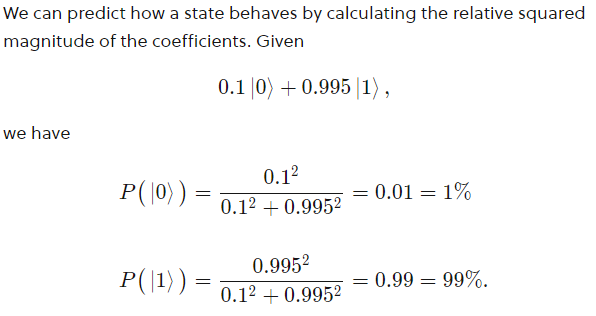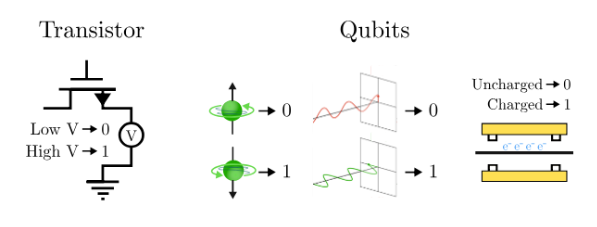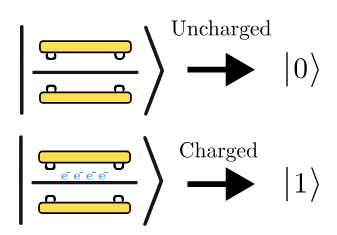Learning about Quantum Computing using Q# and Visual Studio Code.
- Particle-Wave Duality
- Double slit experiment
- Heisenberg Uncertainity Principle
- Stern-Gerlach Experiment
- 4 Bell states
In a certain sense, a quantum computer isn't really computing at all. It's just allowing the laws of physics to act on a system designed for a very particular purpose.
Quantum computing is about processing information with the quantum state and extracting the final form of that information through the measurements.
Qubits which are isolated quantum objects that behave quantum mechanically, with two or more states that can be distinguished with a measurement.
A bit is usually stored in a classical computer using a transistor that is either conducting an electric signal (the "high voltage" 11 state) or not conducting (the "low voltage" 00 state).
A qubit is similar, but it's crafted out of a quantum object — it might be:
- a spinning particle that can point up or down,
- a photon that can be polarized vertically or horizontally, or
- a quantum wire that is charged ("on") or uncharged ("off").
Much like a classical bit, the two possible measurements of a qubit have 1 or 0 assigned to a certain spin, polarization, or electrical charge.
An isolated qubit with stable assigned states can store a bit of information just like a classical bit.
No matter the type of qubit you have — a quantum wire, a photon, or a spinning atom — we choose the computational states based on reproducible measurements we can make, and we give them special names because these are quantum states, not classical ones.
Computational states are quantum states useful for computation, which remain unchanged over many measurements, to represent
1and0.
The two measurables states of a qubit are called and
, and we call this way of writing them as kets.
- In classical computer, smallest unit of work is
bit. In Quantum computers, smallest unit of work isqubit. bitcan have value0or1at any point of time. Analogous to Electric switch which is "On" or "Off".qubitcan have value0or1or both at any point of time. Analogous to Electric dimmer knob which can have any value between "On" and "Off".- In Superposition,
qubithas value0and1both with 50% probability each. - Superposition states are a property of quantum mechanics that distinguishes qubits from bits.
- A superposition state, the probability of measuring one of the two basis states can be found by finding the relative squared magnitude of each of the coefficients.

Note: Measurement of qubit changes its state into one of the computational states, and all the other information in that state is lost.
The manipulation of qubits during computation uses gates that can modify the coefficients of a superposition, not just flip the state. This vastly increases the information density of a quantum computation.
- When two, or more, quantum particles cannot have their states described independently regardless of distance.
- Einstein called this as "Spooky Action At a Distance"
- Hidden variable or wire that entangles 2 or quantum particles together is explained in Bell's experiment.
- Entangled Quantum particles when measured can have following states:
- Odd Parity: particles have opposite state
- Even Parity: particles have same state
- Q# works with Even Parity.
- CHSH Game
- This can be used to transfer message from one qubit to another qubit regardless of distance.
If we were operating on classical bits, we would use the NOT operation to flip a 0 to a 1 (or vice versa), but when we operate on qubits we call it an X operation.

